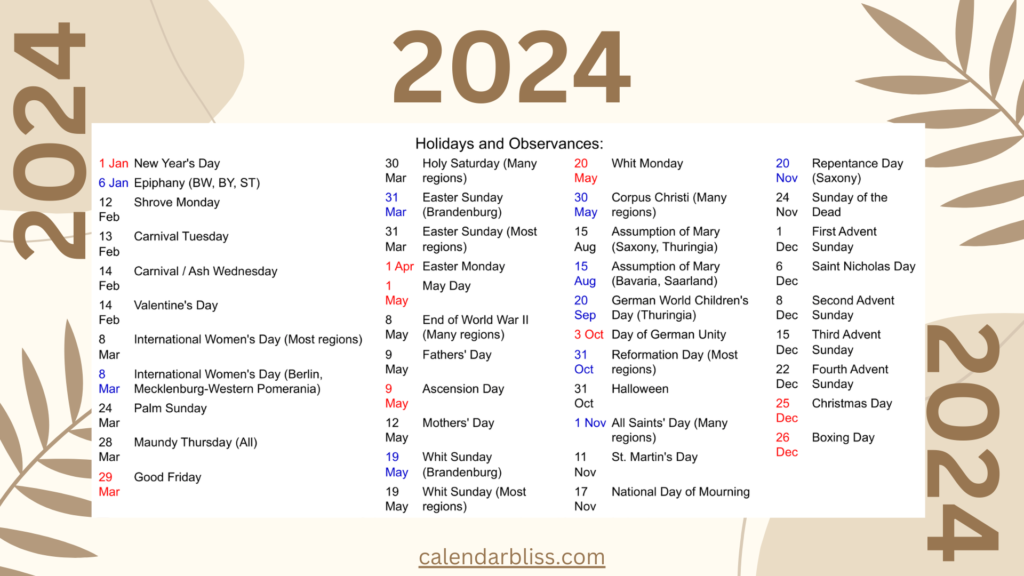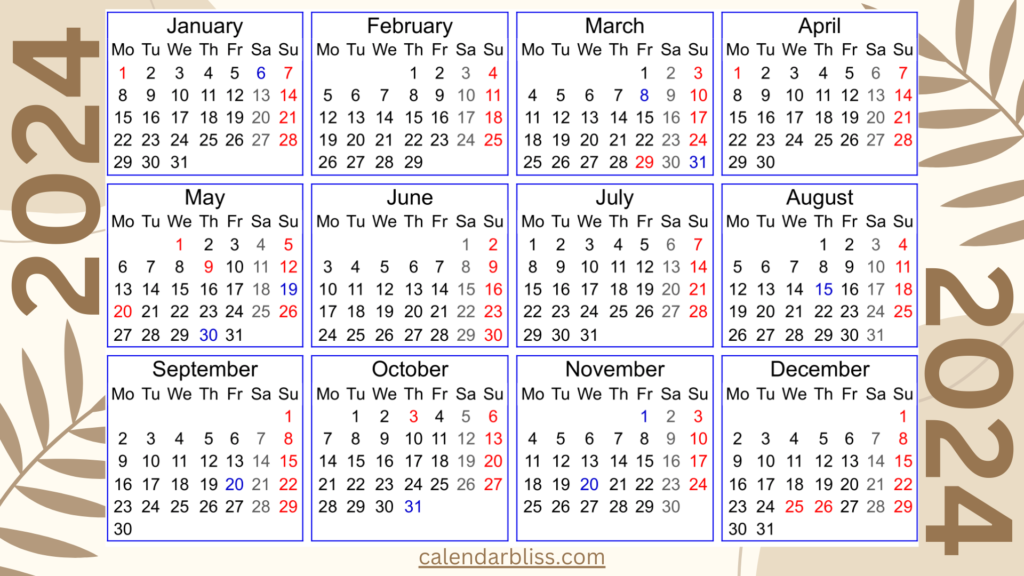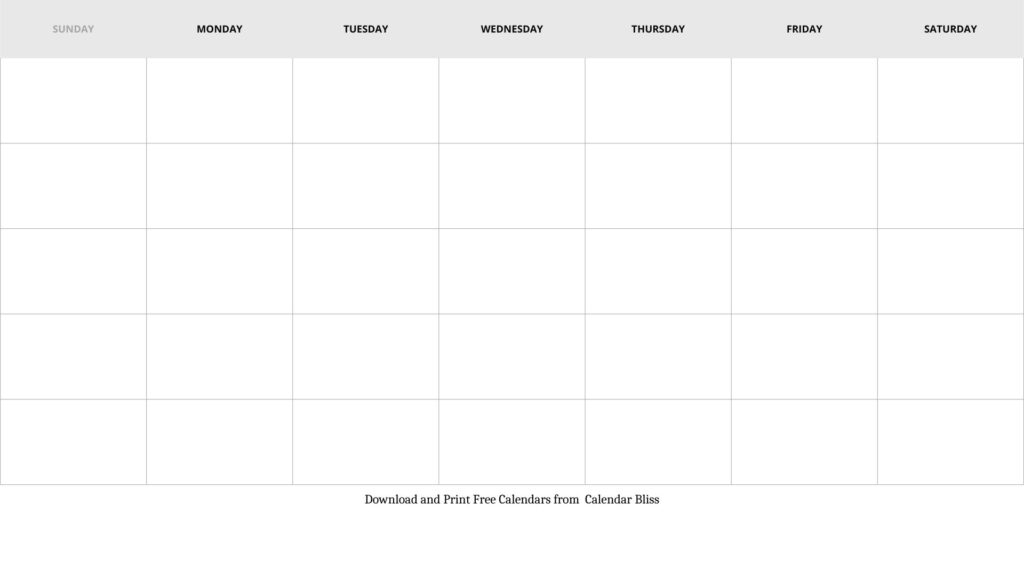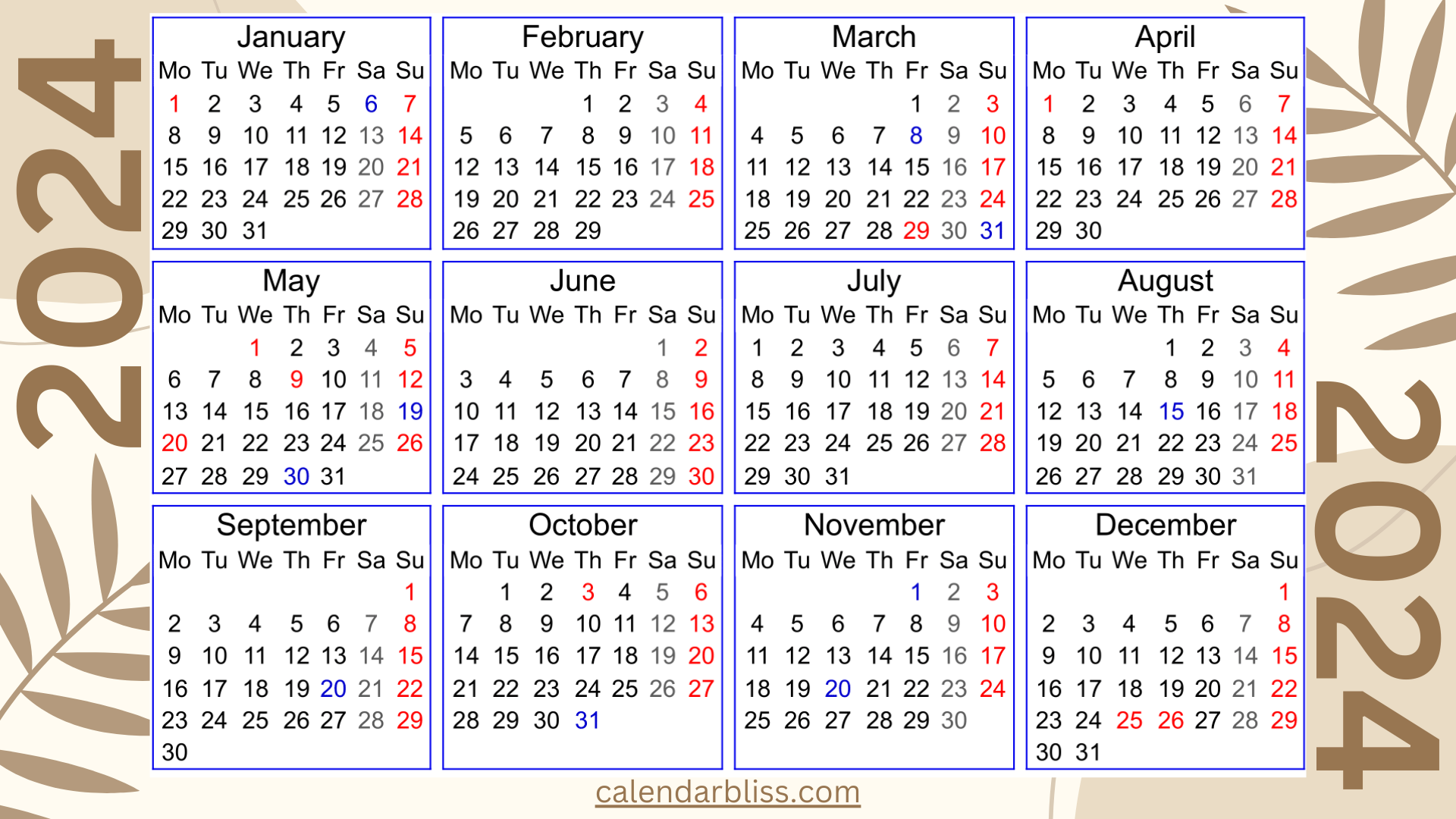Printable Calendars 2024
A calendar is a system of organizing days for commercial or administrative purposes. It typically involves a grid-like structure that displays days, weeks, and months. Printable Calendars have been used for centuries to track time, plan events, and coordinate activities.
Printable Monthly Calendars 2024
Printable Kalender 2024

Print Now
Monatlich Zum Ausdrucken Kalender 2021
Printable Calendars Kalender 2024

Print Now
Types of Calendars
View this post on Instagram
- Lunar calendars: Based on the cycles of the moon.
- Solar calendars: Based on the Earth’s orbit around the sun.
- Luni-solar Printable calendars: Combine elements of both lunar and solar calendars.
Monatlich Zum Ausdrucken Kalender 2022
Components of a Printable Calendar
- Days: The basic unit of time measurement.
- Weeks: A group of seven days.
- Months: Longer periods of time, typically between 28 and 31 days.
- Years: The longest unit, consisting of 12 months.
- Leap years: An extra day added to the calendar every four years to account for the Earth’s orbital period.
Printable Calendar

Print Now
Uses of Calendars
Printable Calendars are essential tools for:
- Time management: Scheduling appointments, meetings, and deadlines.
- Event planning: Coordinating gatherings and celebrations.
- Project management: Tracking milestones and deadlines.
- Record-keeping: Documenting important dates and events.
Digital vs. Physical Calendars
With the advancement of technology, calendars have evolved from paper-based to digital formats.
- Digital calendars: Offer flexibility, synchronization across devices, and integration with other apps.
- Physical calendars: Provide a tangible way to track events and can be visually appealing.
Advent Calendars
An Advent calendar is a traditional countdown calendar used to mark the days leading up to Christmas Eve. Typically featuring 24 doors or windows, each corresponding to a day of Advent, these calendars have become a beloved part of the holiday season for many.
How Advent Calendars Work
Behind each door or window, there is usually a small gift, a piece of chocolate, or a devotional message. As the days pass, people open a new door each day, building anticipation for the upcoming holiday.
Types of Advent Printable Calendars
Advent calendars have evolved over time, and now come in a variety of forms:
- Traditional Advent calendars: Often made of paper or cardboard, with small chocolates behind each door.
- Luxury Advent Printable calendar: Featuring high-end beauty products or gourmet treats.
- Themed Advent calendars: Focused on specific interests, such as movies, toys, or hobbies.
- DIY Advent calendars: Created with personalized items or activities.
The Joy of Advent Calendars
Advent printable calendars offer a sense of anticipation and excitement as the holiday season approaches. They can be enjoyed by people of all ages and serve as a fun way to count down the days until Christmas.
SIGNIFICANT HOLIDAYS IN 2024
| Jan 1: New Year’s Day | May 12: Mother’s Day | Nov 5: Election Day |
| Jan 15: Martin Luther King Jr. Day | May 27: Memorial Day | Nov 11: Veterans Day |
| Feb 14: Valentine’s Day | Jun 14: Flag Day | Nov 28: Thanksgiving Day |
| Feb 19: Presidents’ Day | Jun 16: Father’s Day | Nov 29: Black Friday |
| Mar 17: St. Patrick’s Day | Jun 19: Juneteenth | Dec 24: Christmas Eve |
| Mar 31: Easter Sunday | Jul 4: Independence Day | Dec 25: Christmas Day |
| Apr 1: Easter Monday | Sep 2: Labor Day | Dec 31: New Year’s Eve |
| Apr 15: Tax Day | Oct 14: Columbus Day | |
| May 5: Cinco de Mayo | Oct 31: Halloween |
Google Calendar
Google Calendar is a free online calendar service developed by Google. It’s designed to help you manage your time effectively by scheduling events, setting reminders, and sharing Printable calendars with others.
Key Features
- Event Creation: Easily create events with specific dates, times, locations, and descriptions.
- Reminders: Set up reminders to ensure you never miss an important event.
- Multiple Calendars: Manage different aspects of your life with separate calendars (work, personal, family, etc.).
- Calendar Sharing: Share your calendar with others or subscribe to public calendars.
- Integration: Works seamlessly with other Google services like Gmail and Google Meet.
- Mobile App: Access your calendar on the go with the Google Calendar app for iOS and Android.
How It Works
- Create a Google account: If you don’t have one already, you’ll need a Google account to use Google Printable Calendar.
- Access Google Calendar: Go to calendar.google.com or use the Google Calendar app on your device.
- Create events: Click on the desired date and time to create a new event.
- Add details: Provide information about the event, such as title, location, guests, and reminders.
- Customize your calendar: Change the view (day, week, month), add color coding, and set preferences.
Benefits of Using Google Calendar
- Accessibility: Access your calendar from any device with an internet connection.
- Organization: Keep your schedule organized and up-to-date.
- Collaboration: Share Printable calendars with family, friends, or colleagues for easy coordination.
- Time Management: Optimize your time by effectively managing your schedule.
Google Calendar has become a popular choice for individuals and businesses alike due to its simplicity, versatility, and integration with other Google services.
Wiki Calendar: A Clarification
There seems to be a misunderstanding about the term “wiki calendar”.
Follow Us On:
- https://x.com/calendarbliss
- https://www.linkedin.com/in/calendarbliss/
- https://www.pinterest.com/calendarbliss/
- https://www.facebook.com/calendarbliss/
- https://www.youtube.com/@CalendarBliss
- https://www.instagram.com/CalendarBliss
- https://whatsapp.com/channel/0029VafjNqq1dAw79XyybZ1o
- https://t.me/calendarbliss
What is a Wiki?
A wiki is a collaborative website that allows multiple users to create, edit, and link pages related to a particular topic or subject. It’s a platform for knowledge sharing, not specifically designed for calendar functions.
What is a Calendar?
A calendar is a system of organizing days for commercial or administrative purposes. It typically involves a grid-like structure that displays days, weeks, and months.
While there’s no specific software or platform called “wiki calendar“, you can:
- Create a calendar page within a wiki: This would involve using wiki features to create a page specifically for calendar events, but it wouldn’t have the same functionality as a dedicated Printable calendar application.
- Embed a calendar from an external source: You could embed a Google Calendar or other calendar service into a wiki page for better integration.
- Use a wiki to manage calendar-related information: For instance, you could create wiki pages to document calendar events, share scheduling policies, or provide instructions for using the calendar.
In essence, while the terms “wiki” and “calendar” can be used together to describe certain scenarios, they are fundamentally different tools with distinct purposes.
Would you like to explore options for creating or managing calendars within a wiki environment or discuss alternative calendar solutions?
I can also provide information about popular calendar applications or tools if you prefer.
Sephora Advent Calendars
Sephora Advent Calendars are highly anticipated annual releases that delight beauty enthusiasts with a countdown to Christmas filled with surprises. These limited-edition collections typically include a mix of popular and emerging brands, offering a range of skincare, makeup, haircare, and fragrance products.
What to Expect
- Diverse product range: From full-sized items to deluxe samples, there’s something for everyone.
- Exciting surprises: Unboxing each day reveals a new product, adding to the holiday excitement.
- Limited availability: Sephora Advent Calendars are often highly sought-after and sell out quickly.
Why People Love Them
- Product discovery: A fantastic way to try new brands and products.
- Potential value: The total value of the products often exceeds the calendar’s price.
- Holiday anticipation: The daily countdown adds to the festive atmosphere.
Shareable Online Calendars
A shareable online calendar is a digital tool that allows multiple people to view, edit, and manage events simultaneously. It’s an invaluable resource for families, teams, organizations, and anyone who needs to coordinate schedules.
Key Features of Shareable Online Calendars:
- Real-time updates: Changes made by one user are instantly reflected for everyone.
- Event creation and editing: Users can create, modify, and delete events.
- Reminders and notifications: Stay informed about upcoming events.
- Color coding: Categorize events for easy visualization.
- Integration with other tools: Sync with email, task management, or video conferencing platforms.
- Accessibility: Available on various devices (computers, smartphones, tablets).
Popular Shareable Online Calendar Platforms:
- Google Calendar: Offers robust features, integration with Google Workspace, and easy sharing options.
- Outlook Calendar: Part of the Microsoft suite, integrates seamlessly with Outlook email and other Office applications.
- Apple Calendar: For Apple users, offers tight integration with other Apple devices.
- Cozi: Designed specifically for families, with features like shared shopping lists and to-do lists.
- Other options: Numerous other platforms like Zoho Calendar, Calendly, and specialized industry-specific calendars exist.
Benefits of Using a Shareable Online Calendar:
- Improved coordination: Ensures everyone is on the same page.
- Time management: Helps optimize schedules and avoid conflicts.
- Increased productivity: Streamlines planning and reduces missed appointments.
- Enhanced collaboration: Facilitates teamwork and project management.
By choosing the right platform and utilizing its features effectively, you can significantly improve your ability to manage schedules and collaborate with others.
Solar Calendar: Aligning Time with the Sun
A solar calendar is a calendar system based on the Earth’s revolution around the Sun. Unlike lunar calendars that follow the phases of the moon, solar calendars focus on the solar year, which is the time it takes for the Earth to complete one orbit around the Sun.
Key Characteristics of Solar Calendars:
- Based on the Sun: The calendar’s structure aligns with the Earth’s position relative to the Sun.
- Seasonal Alignment: Solar calendars typically correlate with the changing seasons.
- Leap Years: To account for the Earth’s exact orbital period, which is slightly more than 365 days, leap years are incorporated to adjust the calendar.
Examples of Solar Calendars:
- Gregorian Calendar: The most widely used calendar today, it’s a solar calendar with adjustments for leap years.
- Julian Calendar: A predecessor to the Gregorian calendar, it was used in the Roman Empire and many parts of Europe for centuries.
Importance of Solar Calendars:
- Agricultural Practices: Solar calendars have been crucial for planning planting and harvesting seasons.
- Cultural and Religious Celebrations: Many cultures have developed rituals and festivals aligned with the solar year.
- Timekeeping: Solar calendars provide a consistent framework for organizing daily, monthly, and yearly activities.
Lunar Calendar: Following the Moon’s Cycle
A lunar calendar is a calendar system based on the Moon’s phases. Unlike solar calendars, which are aligned with the Earth’s orbit around the Sun, lunar calendars follow the Moon’s approximately 29.5-day cycle from new moon to full moon and back again.
Key Characteristics of Lunar Calendars:
- Months based on lunar cycles: Each month corresponds to one complete cycle of the Moon’s phases.
- Shorter years: Lunar years are typically shorter than solar years, leading to adjustments like intercalary months.
- Cultural significance: Lunar calendars have played a crucial role in many cultures, influencing agriculture, religious practices, and social customs.
Examples of Lunar Calendars
Some of the most well-known lunar calendars include:
- Islamic calendar: Primarily used in Islamic countries, it’s purely lunar and doesn’t attempt to align with the solar year.
- Hebrew calendar: A lunisolar calendar, incorporating adjustments to align with the solar year.
- Traditional Chinese calendar: A lunisolar calendar with a complex system of intercalation.
Lunar Calendars Today
While solar calendars have become the dominant system for most of the world, lunar calendars still hold significance for many cultures and religions. They continue to influence celebrations, festivals, and agricultural practices in various parts of the world.
Lunisolar Calendar: A Blend of Sun and Moon
A lunisolar calendar is a system that incorporates elements of both lunar and solar calendars. It attempts to reconcile the lunar month, based on the phases of the moon, with the solar year, determined by the Earth’s orbit around the sun.
How it Works
- Lunar Months: The calendar is divided into months based on the lunar cycle, typically around 29 or 30 days long.
- Solar Year: To align with the solar year, additional months or days are added periodically to adjust the calendar. This is known as intercalation.
Examples of Lunisolar Calendars
Some of the most well-known lunisolar calendars include:
- Hebrew calendar: Used in Judaism.
- Chinese calendar: Used in Chinese culture and other East Asian cultures.
- Hindu calendar: Used in various Hindu traditions.
Challenges and Adaptations
Creating a precise lunisolar calendar can be complex due to the incommensurability of the lunar and solar cycles. Over time, various methods of intercalation have been developed to maintain alignment between the calendar and the natural cycles.
Many cultures have adopted solar calendars for practical purposes, while still using lunisolar calendars for religious or cultural celebrations.
The Gregorian Calendar: Our Modern Timekeeper
The Gregorian calendar is the most widely used calendar system in the world today. It was introduced by Pope Gregory XIII in 1582 as a refinement of the Julian calendar.
Key Features:
- Solar calendar: Based on the Earth’s orbit around the sun.
- 12 months: Consists of 12 months with varying numbers of days.
- Leap years: To account for the Earth’s exact orbital period, an extra day is added to February every four years, except for century years not divisible by 400.
- Week: A seven-day period, typically starting on Sunday and ending on Saturday.
Why Was It Needed?
The Julian calendar, which preceded the Gregorian calendar, had gradually accumulated errors due to inaccuracies in calculating the length of a year. This led to discrepancies between the calendar and the actual solar year. The Gregorian calendar addressed this issue by introducing a more precise leap year system, resulting in a calendar that more accurately aligns with the Earth’s orbit.
In essence, the Gregorian calendar provides a reliable and standardized system for measuring time, essential for coordinating global activities and events.
Hindu Calendars
Hindu calendars are a fascinating aspect of Indian culture and tradition. Unlike the Gregorian calendar, which is solar-based, Hindu Printable calendar are primarily lunisolar, meaning they are based on both the lunar and solar cycles. This complexity has led to the development of numerous print calendars across different regions and communities.
📆 2024 Calendar
Key Features of Hindu Calendars
- Lunar-Solar Basis: Most Hindu Printable calendars follow a lunar month, but adjustments are made to align with the solar year.
- Multiple Calendars: There are several Hindu calendars in use, including the Vikram Samvat, Saka Samvat, and the Tamil calendar.
- Religious Significance: Hindu calendars are closely tied to religious festivals and rituals.
- Astrological Importance: Many Hindu calendars incorporate astrological elements, influencing various aspects of life.
Common Hindu Calendars
- Vikram Samvat: Predominantly used in North India, it is believed to have started in 57 BC.
- Saka Samvat: The national Printable calendar of India, it began in 78 AD.
- Tamil Calendar: Primarily used in Tamil Nadu, it has its own reckoning of time.
Challenges in Conversion
Converting dates between Hindu and Gregorian calendars can be complex due to the different starting points, leap years, and intercalary months.
Modern Usage
While the Gregorian calendar is widely used for administrative purposes in India, Hindu Printable calendars continue to hold significance for religious, cultural, and astrological practices. They play a crucial role in determining auspicious dates for weddings, festivals, and other important events.
Windows Live Calendar
Windows Live Calendar was a popular online printable calendars service offered by Microsoft as part of its Windows Live suite of products. It allowed users to create, manage, and share calendars, similar to other online calendar platforms.
Key Features of Windows Live Calendar
- Online accessibility: Users could access their calendars from any computer with an internet connection.
- Event management: Create, edit, and delete events with ease.
- Sharing capabilities: Share Printable calendars with others for coordination.
- Integration with other Windows Live services: Worked seamlessly with other Windows Live products like Hotmail and Messenger.
The End of an Era
Unfortunately, Windows Live Calendar has been discontinued. Microsoft has transitioned its calendar services to Outlook.com, which offers similar functionalities and even more advanced features.
Migration to Outlook.com
If you were a Windows Live Calendar user, it’s likely that your calendar data was migrated to Outlook.com. You can access your calendar by signing in to your Outlook.com account.
Outlook.com provides a more robust platform for printable calendars management, offering features like:
- Integration with Office 365: Seamlessly works with other Microsoft productivity tools.
- Enhanced sharing options: More flexible ways to share Printable calendars with others.
- Improved mobile experience: Optimized for smartphones and tablets.
While the end of Windows Live Calendar was a change for many users, the transition to Outlook.com has provided a more comprehensive and feature-rich calendar solution.
Mozilla Sunbird: A Calendar No Longer
Mozilla Sunbird was a free and open-source printable calendars application developed by the Mozilla Foundation and Sun Microsystems. Designed to be cross-platform, it aimed to provide a robust and user-friendly calendar experience.
A Brief History
Sunbird was initially released as a standalone printable calendars application, but later became part of the Mozilla Lightning extension for the Thunderbird email client. Due to resource allocation, the development of Sunbird was discontinued in favor of focusing on Lightning.
Reasons for Discontinuation
The decision to end Sunbird’s development was primarily driven by the following factors:
- Resource allocation: The Mozilla Foundation opted to concentrate development efforts on other projects, such as Firefox.
- Integration with Thunderbird: Lightning offered similar functionality and could be integrated seamlessly with email.
- Evolving user needs: The printable calendar landscape was changing rapidly, with new online and cloud-based calendar services emerging.
The Legacy of Sunbird
While no longer actively developed, Sunbird left a mark on the calendar application landscape. Its open-source nature and focus on user experience influenced subsequent calendar tools. Many of the features introduced in Sunbird found their way into other printable calendars applications, including those still in use today.
Today, users have a wide range of calendar options, from built-in calendar apps on operating systems to cloud-based services like Google printable Calendars, Outlook Calendar, and Apple Printable Calendars. These modern alternatives often offer more features, better integration, and broader accessibility.
